It’s a great pleasure for me to go through the blog of Andreas Deja. It’s like digging into a virtual museum of Disney classics and great artists. Andreas Deja himself is an animation master. During his 30 years woking at Disney, Andreas was responsible for prominent characters like Gaston in “Beauty and the Beast”, Jafar in “Aladdin”, Scar in “The Lion King”, and Lilo in “Lilo and Stitch”.
Besides, to be able to hang out and learn from six of the “Nine Old Men” of Disney is a privilege not many can have. Andreas is obviously the lucky one. So it’s even more amazing to see him sharing these delightful and valuable experience on his personal blog. Here are some of the advice and tips that I find magically equivalent to the pixie dust spreading over the castle in Disney’s intro.
Just to get started, here is a photo from 1980, when I got accepted into Eric Larson‘s Disney Animation Training Program. Eric was the most patient teacher. Some of his words of wisdom didn’t sink in until much later. Observation was one of his favorites. “Look around you and observe things, you will need it!”
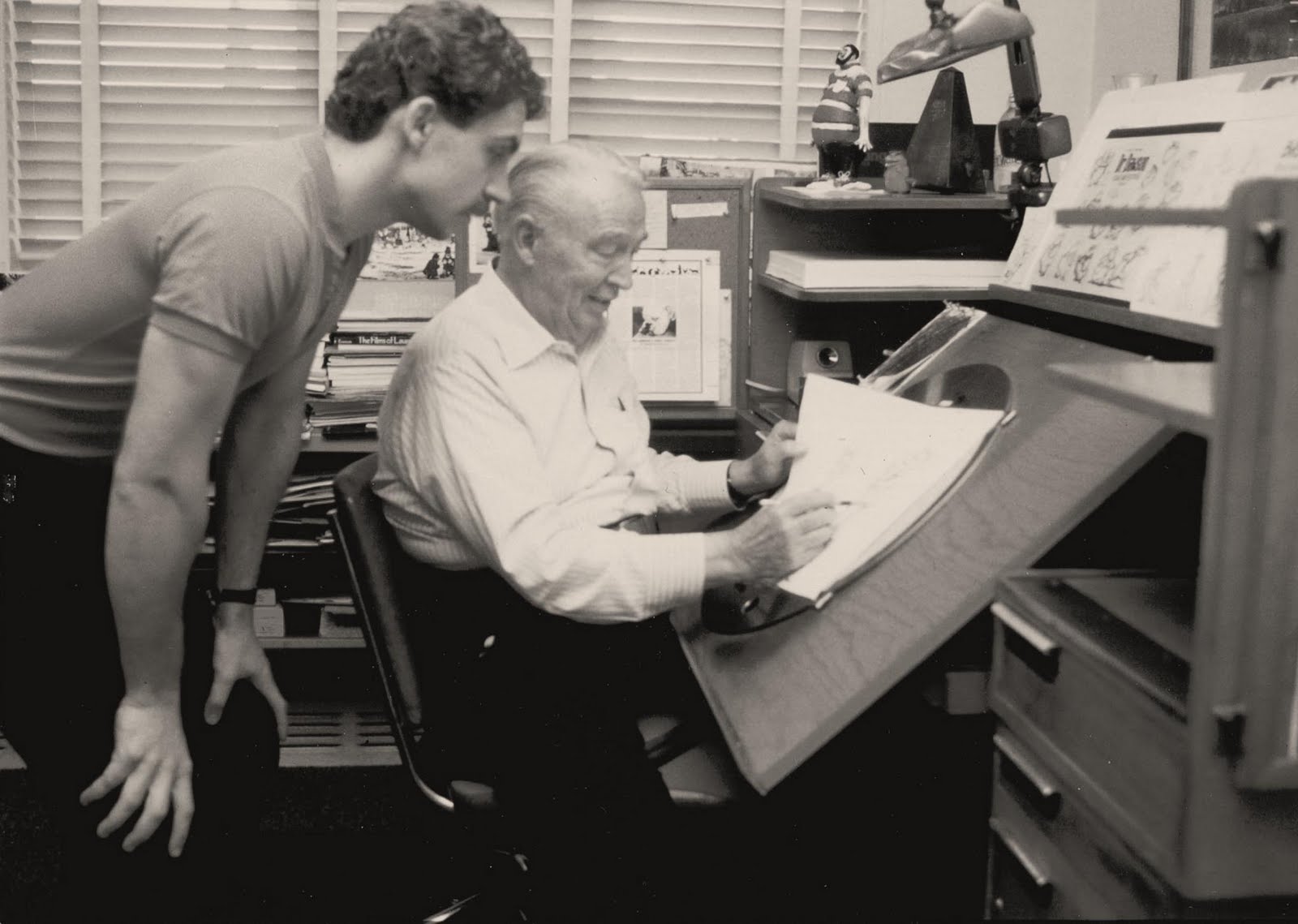
Eric Larson’s animation training program, which started in the mid 1970s, was groundbreaking and very important. I was so lucky to have benefited from Eric’s one on one mentoring. He was the most patient teacher I have ever known. Even when you knew that what you were showing to Eric was REALLY bad stuff, he always saw something positive in your work that encouraged you to keep going. He would often flip a trainee’s scene, and most likely he pointed out that there was too much going on in the animation, too many ideas. What is your statement here, what are you trying to communicate? After a brief discussion Eric would pull out drawings that weren’t necessary, and he simplified and clarified your whole scene. It was magical to see him do this. Eric also drew over poses and strengthened them, so by the time you were done with your session you left Eric’s office with something that WORKED.
Many of today’s influential animation artists went through Eric’s training program, including Tim Burton, Brad Bird, Ron and John, Mark Henn, Andy Gaskill and Glen Keane, just to name a few.
I love many characters Eric animated over the years. But I think that Eric did some of his best work for Lady & the Tramp. He animated the first half of the sequence with the beaver at the zoo. Milt Kahl did the second half. Eric’s shining moment in the film is his animation of Peg. I swear, Milt Kahl told me that he believes it’s the best stuff in the picture.
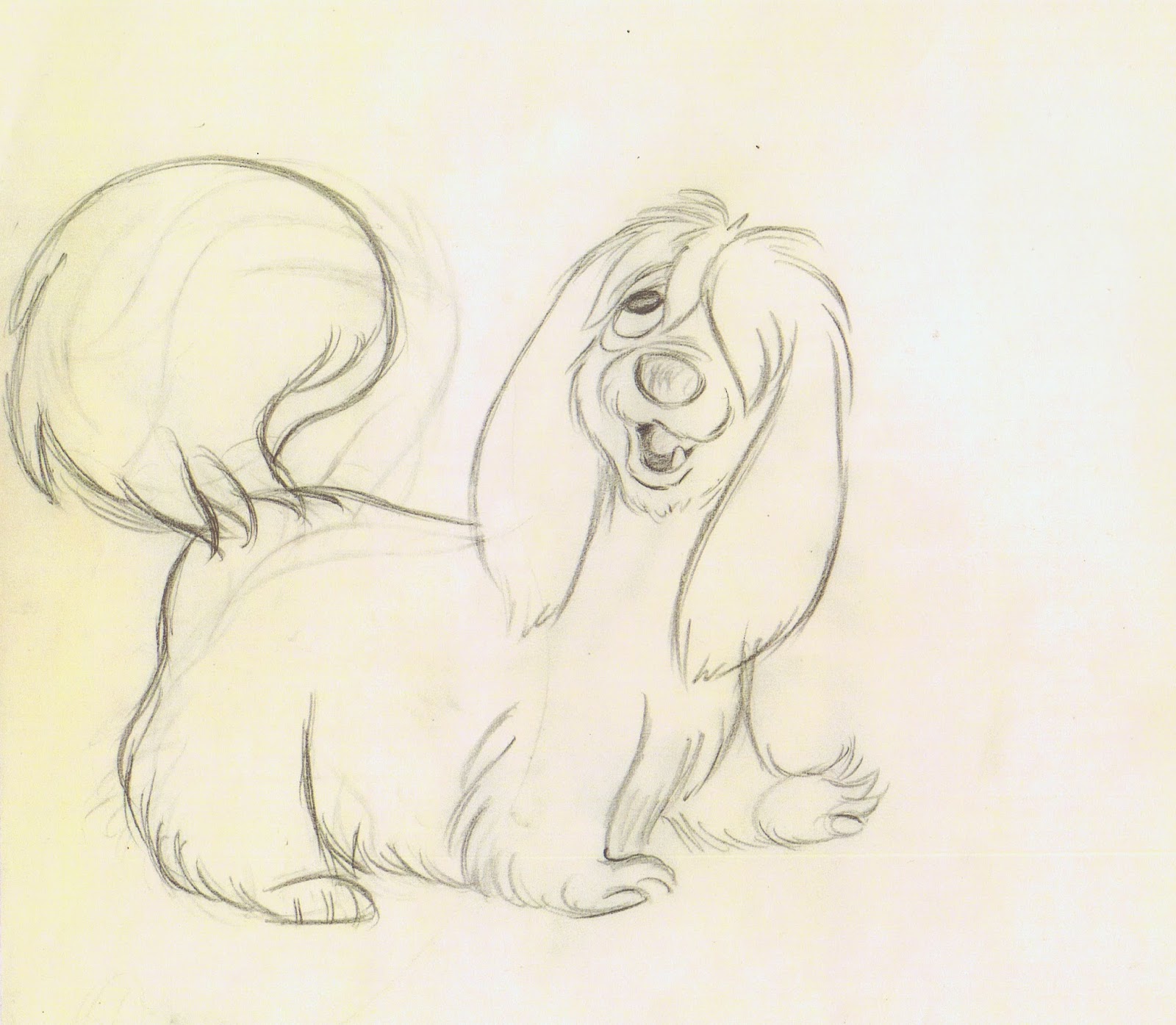


I started to ask him (Milt Kahl) about the balance of straight versus curved lines in his drawings, I swear, he didn’t know what I was talking about. “You need to draw well”, that’s it. But he did talk about how much he enjoyed developing characters, “Song of the South”, Merlin and Mim, Shere Khan and Madame Medusa being some of his favorites. I have a couple of his pencil tests for you, the famous Pinocchio skip, and then the Sheriff of Nottingham walking toward camera with a lot of weight.
Ollie Johnston‘s statement to students: “Your drawings can be rough, but they need to be clear!” As you can see in the drawings below, Ollie put a lot of love into his animation. “When I was doing Pinocchio” he told me once “I thought of the character being real, a living person, not a drawing.” I know that’s how he felt about all of his characters.

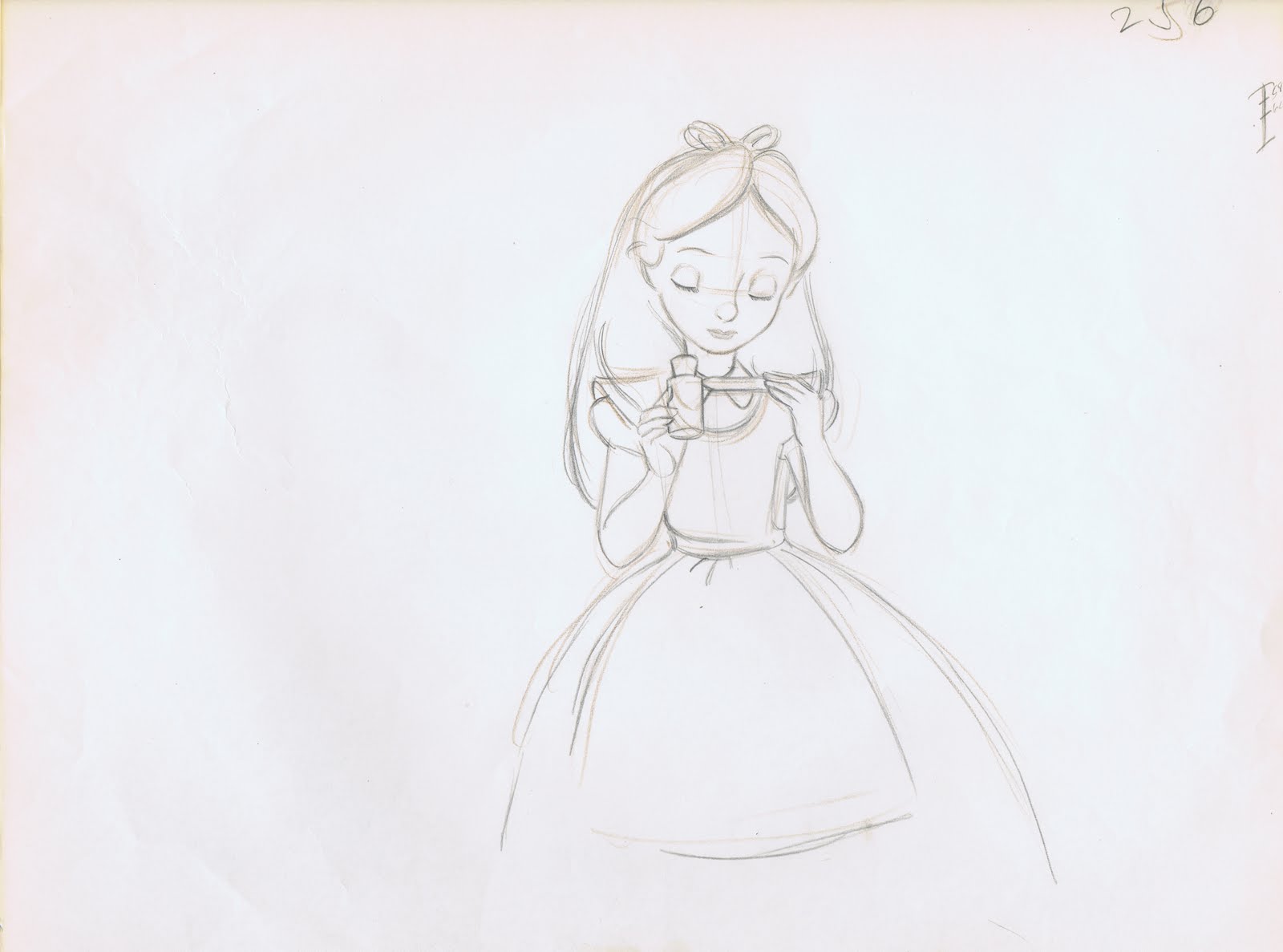

As an art student Marc (Marc Davis) would visit the local zoos early in the morning before opening time. He had made a deal with zoo management, in return for this special treatment Marc would leave an occasional sketch for the animal keepers. He told some of us much later: “It is during the early morning hours when the animals are most active. They are being fed and move around, and this makes for interesting study of motion and behavior.” In the afternoons Marc went to libraries and studied animal anatomy from books.
When I saw these animal sketchbooks for the first time, I was struck not only by the beauty but also by the cohesiveness of the drawings. What I mean by that is, because of Marc’s strong observation and thorough knowledge of the inner structure of the animal, these sketches look like they are ready to be animated. Just like in good model sheets, everything is worked out. You can see clearly how the bodies are functioning mechanically, and of course there is also a feeling for the essence of the animal.

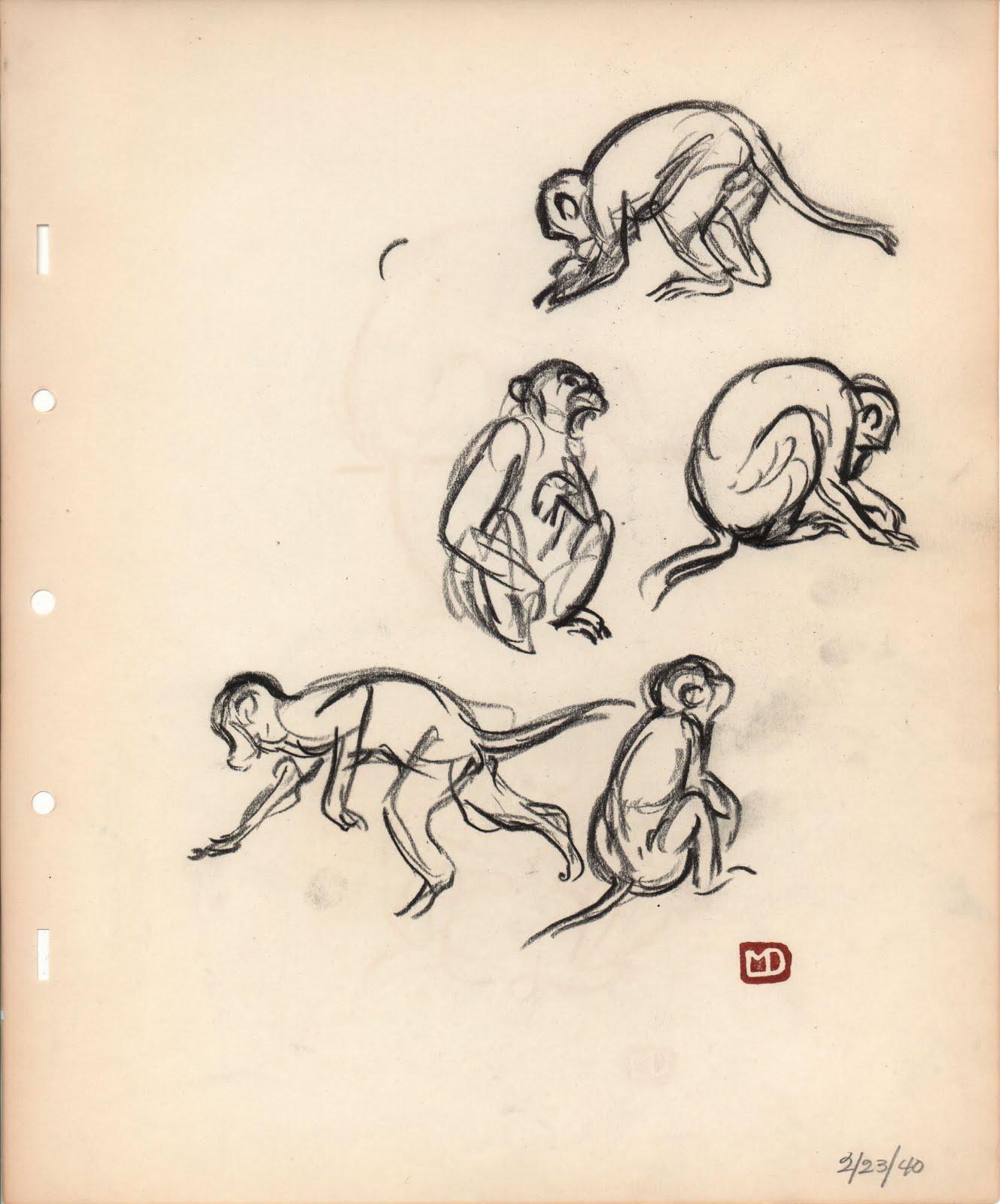
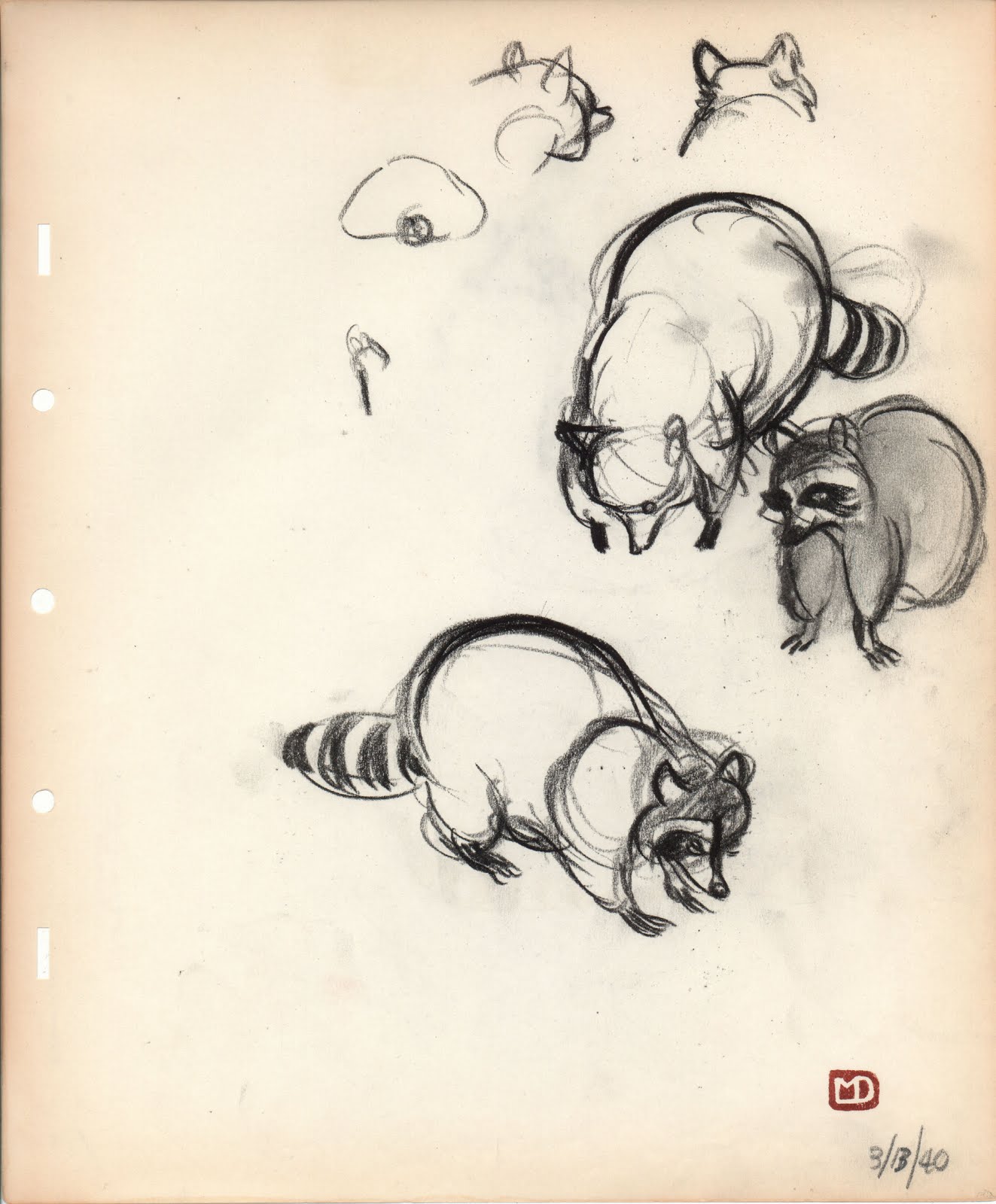

Frank (Frank Thomas) was very critical about the way other animators used live action. To him the acting ideas were all you needed, but you still had to pass judgement on the footage and interpret what the actor gave you. His animation never has that roto, floaty feel to it. For one thing Frank was way too talented and smart to let that happen. This is the intro of Captain Hook. The pencil test is the tied down version. It’s……incredible!


The best of Disney’s animators knew how to stage their characters in a way that made them easy to read on the screen. That way their personality statements were uncluttered and to the point. Every line put on paper supports a main thought, and the rhythm of the drawing leads your eyes toward the area you are supposed to look at. This is not an easy thing to achieve. An animator needs to boil things down to a clear essence, because the audience only has a split second to see and understand what’s going on.
I traced these classic Disney moments off from xeroxes of the originals. In most cases the characters were animated on different levels, I combined them here for the final composition. This stuff leaves me in awe. I know that some animators like Frank Thomas and Eric Larson worked hard to achieve this simplicity, while others like Milt Kahl and Marc Davis did it intuitively. Each drawing is accompanied by an overlay that shows the flow toward the focused area.
The first example from “Pinocchio” even had two animators who worked out the staging issues. Stromboli was animated by Tytla, Pinoke by Frank Thomas. Combined they form a powerful composition, the main focus is Stromboli’s right hand grabbing Pinocchio. The characters connect very strongly. That firm grip shows Stromboli’s physical strength, and Pinocchio’s vulnerability.


Milt Kahl did all three characters in this scene from “Song of the South”. They relate sooo simply, clear personality and attitude in each of them. Your eyes end up at the rabbit.


Frank Thomas animated Merlin and Mim. Props like Merlin’s hat and his magic wand help point to his nose being grabbed by Mim. That’s the business of the scene and all lines support the idea. Here again opposing attitudes make up for an entertaining statement.


Robin and Maid Marian were done by Milt, their hands/paws connect in such a simple and elegant way. Even the feather on Robin’s hat is curved and points toward Maid Marian. This looks so simple, but it really is quite sophisticated.

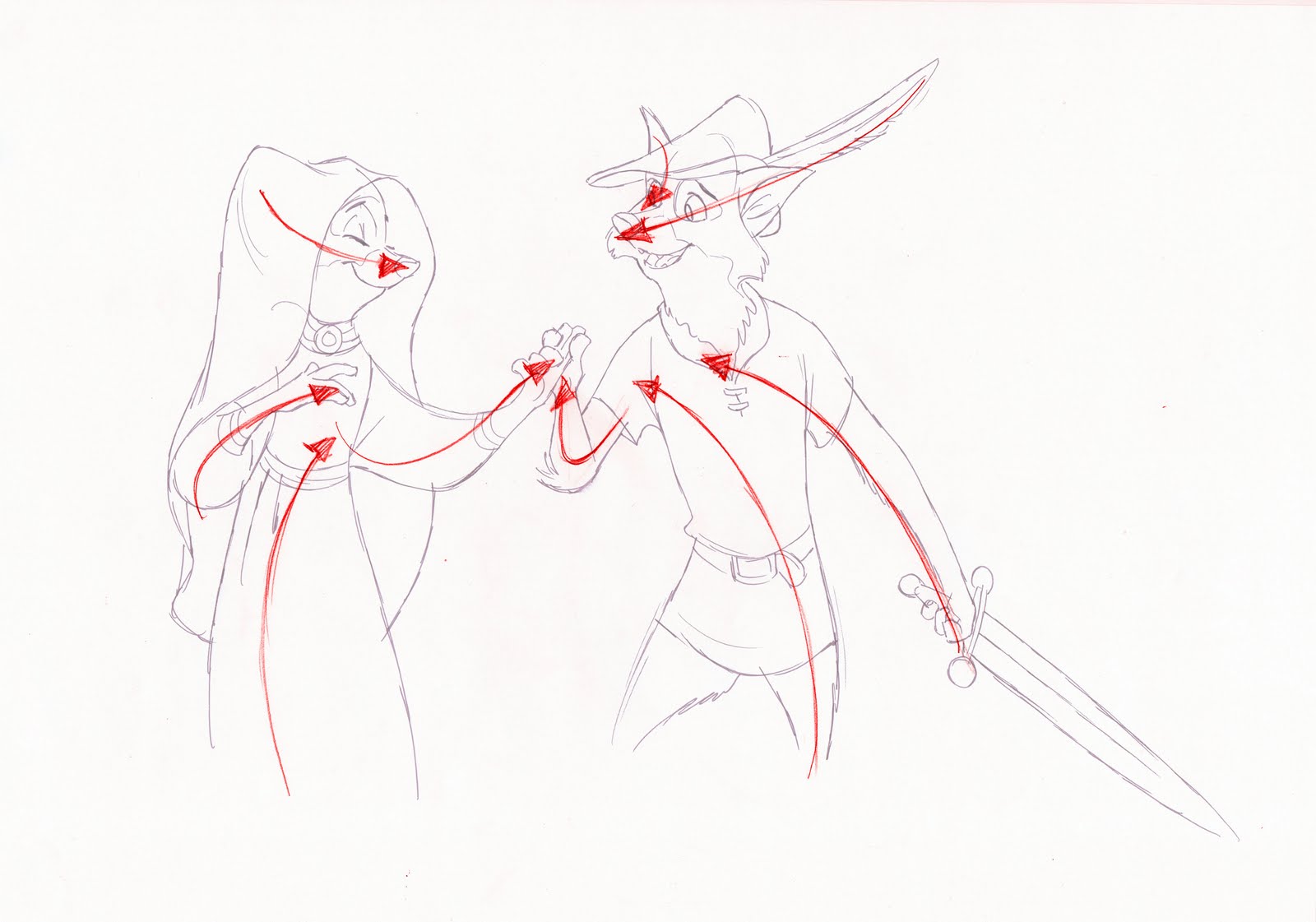
Milt again, drawing Penny and Medusa. It is absolutely clear who is the forthcoming character, and who is reacting. Medusa is as usual overpowering, and here even her lips help the visual connection with Penny.
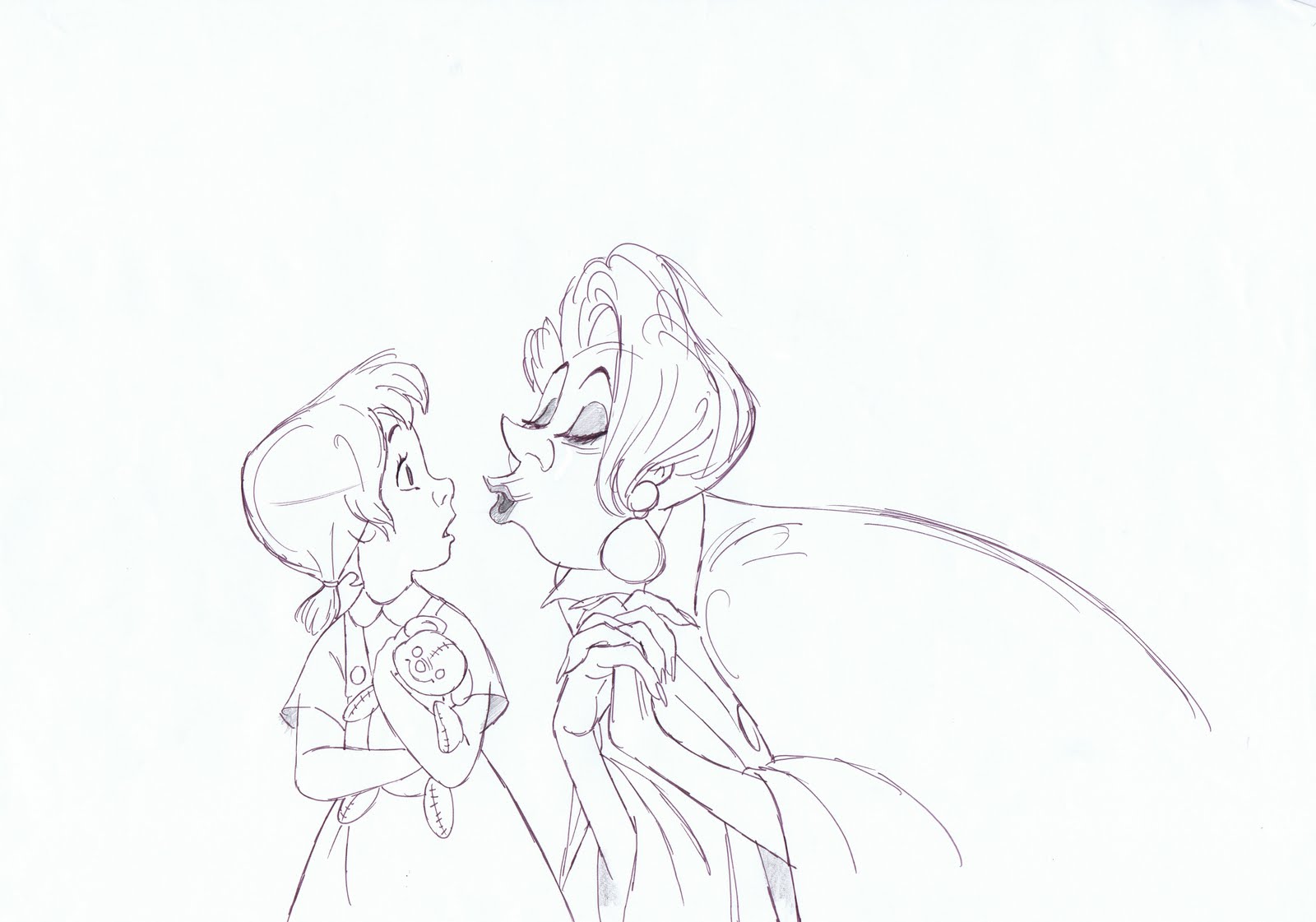

Head over to Andreas Deja’s blog for more insights into the Disney legends, as well as updates on his latest project. We’ll talk about it very soon!
This blog was first published on Kuvva blog.